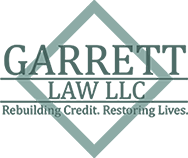Understanding Bankruptcy Basics
The word “bankruptcy” often comes with a negative stigma. For many, it signifies failure and shame. But, the truth is, bankruptcy has helped thousands of people throughout the country recover from dire financial situations. There are many reasons why people fall into debt. For example, someone may have mounting medical bills, a layoff from a job, or have had no choice but to make ends meet by using credit cards. Whatever the reason for your financial crisis, help can be found through bankruptcy. Here’s what you need to know.
Which Bankruptcy Option Is Right for You?
Before you can decide on filing for bankruptcy, it’s essential to know the difference between the two types of bankruptcies that can help you get out of debt; Chapter 7 and Chapter 13. Read on to learn how each one works.
Chapter 7 Bankruptcy
Chapter 7 bankruptcy, also known as “straight” or “liquidation” bankruptcy is the most common form of bankruptcy and is used to relieve unsecured debt (loans that are not backed by collateral). If you have the following types of debts, Chapter 7 could be the right option for you:
- *Credit card debt
- Deficiencies on repossession
- Medical bills
- Back rent from an old lease
- Civil judgments
- Personal unsecured loans
- *Bounced checks
When it comes to credit card debt, you may encounter an obstacle if you have made any changes within the last 90 days or have made cash advances from your credit cards within the past year. Furthermore, bounced checks can be discharged in Chapter 7 bankruptcy. However, you may need to pay the face value and a collection fee for any bad checks you’ve written within the last five years to avoid criminal prosecution.
Can I Keep My Property Under Chapter 7 Bankruptcy?
Under Chapter 7 bankruptcy, you will be able to keep most or all of your property. In Kansas, you may keep property such as clothing, equity in your residence, furs, and jewelry up to $1,000 per person and up to $7,500 in tools of the trade if you are self-employed.
If you have debts secured by property, such as your home or vehicle, surrendering the property the relieves you from paying the loan. However, if you want to keep the property, you either have to reaffirm the loan (you are personally liable on the note) or pay the fair market value in one lump sum (known as redemption). You also have the option to keep your property through Chapter 13 bankruptcy, which is explained in further detail later in this article.
What is the Means Test?
To qualify for Chapter 7 bankruptcy, you will be required to take the “means test.” The means test is a tool used to examine an individual’s debt against their income to determine if they are capable of repaying their debts. If you do not pass the means test, then Chapter 13 bankruptcy may be a viable option in this case.
Chapter 13 Bankruptcy
Chapter 13, also know as reorganization bankruptcy is a good option for those individuals who do not qualify for Chapter 7. Chapter 13 allows you to restructure your debt into a payment plan that typically will last between three and five years. Under this bankruptcy chapter, you may be able to discharge some debts, while having more time to catch up on or pay off other debts.
Chapter 13 may be the right option for you if:
- You do not qualify for Chapter 7 bankruptcy.
- You want to save your home from foreclosure.
- You want to keep assets that would otherwise be disclosed in Chapter 7 bankruptcy.
- You want to defer tax debts.
- You want to defer student loan debts.
Filing for Chapter 13 also means that you will not have to pay any upfront fees and your petition can be filed as soon as your paperwork is received. When already struggling with debt, this can be a relief. All attorney fees and filing fees are rolled into your bankruptcy payment plan.
What are Nondischargeable Debts?
Under bankruptcy law, certain debts may not be permitted to be filed with your petition. The following nondischargeable debts include but are not limited to:
- Certain tax debts
- Government debts
- Student loans
- Child support payments
- Spousal maintenance
- Court-ordered restitution
- Court fees
- Damages related to DUI
- Debts incurred by fraudulent activities
- Debts not listed in the bankruptcy petition
While recent back taxes are not permitted in bankruptcy filings, there are some exceptions. You may be able to discharge old income tax debt, but first, you must meet certain conditions to be eligible to add this to your bankruptcy petition. When it comes to the discharging of tax debts, it’s critical to speak to an experienced bankruptcy lawyer.
How You Are Protected by the “Automatic Stay”
No matter what chapter of bankruptcy you decide to file, you will be protected from harassing creditors through the automatic stay under bankruptcy law. This means that debt collectors and your creditors are not permitted to contact you or pursue any legal action to collect money. The automatic stay will also protect you against wage garnishment. If you are being threatened with wage garnishment, contact a bankruptcy attorney immediately as time is of the essence in this situation.
Speak to a Topeka Bankruptcy Lawyer Today
If you are struggling with overwhelming debt and are considering bankruptcy as an option, we are here to help you every step of the way. For over ten years, Garrett Law LLC has helped hundreds of our clients become debt-free through bankruptcy. Contact us today to schedule a free phone or virtual consultation at (888) 253-4526.

